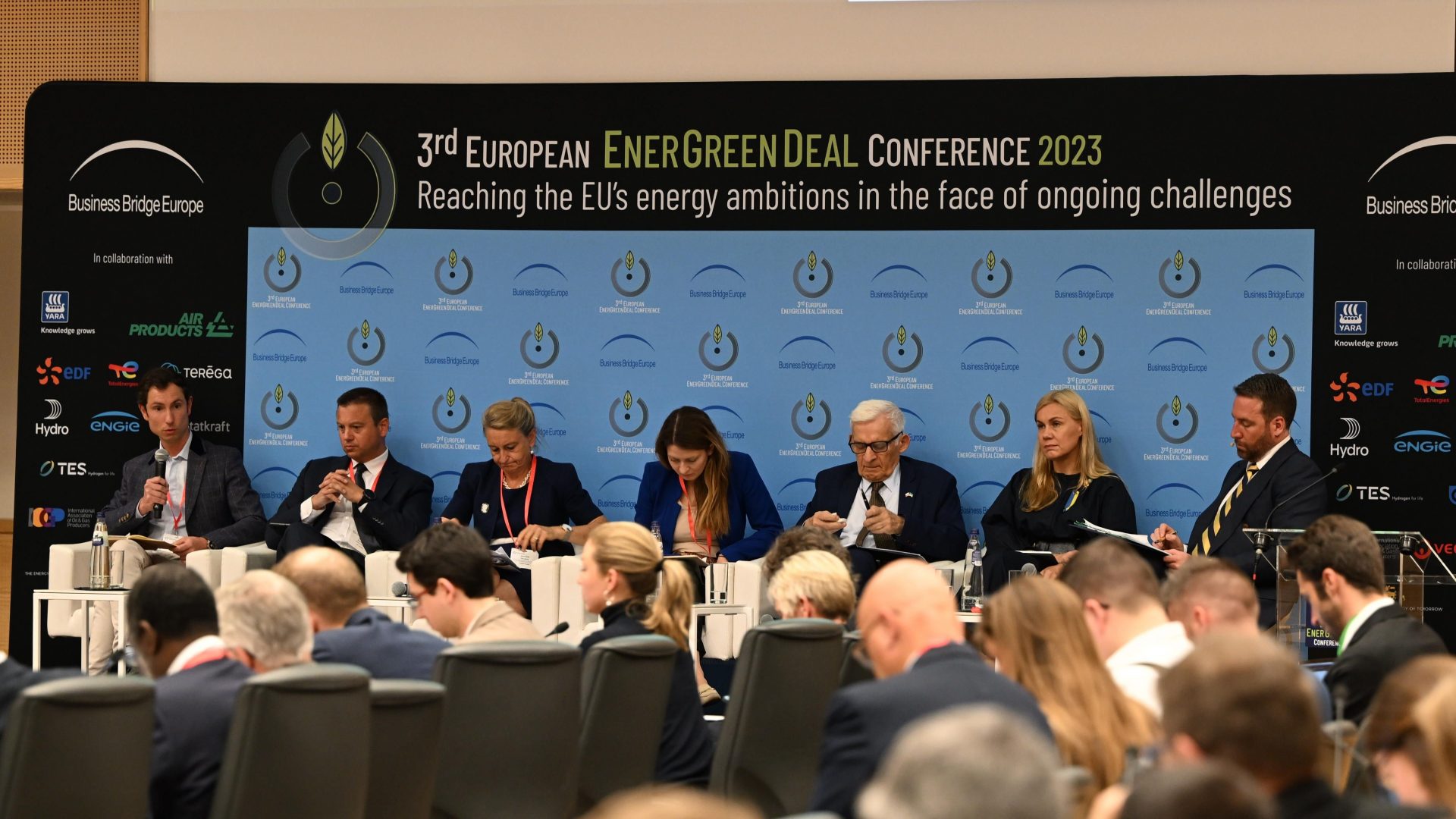
energy & environment
10 takeaways from the 2023 EnerGreenDeal Conference
How can Europe make a success of this green transition and build a more resilient, competitive and fair future? Here are ten key takeaways from the 2023 EnerGreenDeal Conference, where logos.BBE welcomed top EU leaders, including Commission Executive Vice President Timmermans and Commissioner Simson, for a day of debate on the topic with the biggest names in the EU energy business.
1. We are running out of time…
Europe is going through a real industrial revolution, but we cannot fall into ‘nimby’-ism if we want to reach the 2030 and 2050 targets. Without strong short-term signals in the form of public support or investment, there is a risk that the gap between ambition and action becomes wider, and that we would lag behind the United States and China.
2. … and money is tight
The compound effect of Covid-19, supply chain disruptions, high-interest rates, inflation and the Russian invasion of Ukraine has made finances scarce, just when we need them most. To implement green energy projects at scale, public funding has to be complemented with support from financial institutions.
3. Focus on the positives
As it becomes crystal clear the magnitude of the challenges we face, there is danger of a wave of green pessimism sweeping across Europe. The Commission has put in a lot of work over the past year to set the policy conditions for a successful transition. Industry has many innovative business cases and success stories that should be showcased to create a more optimistic narrative if we hope to attract investment – whether it is ammonia, batteries, or electrolysers.
Good discussions at the #EnerGreenDeal panel, exchanging views on how to realistically & efficiently reduce & decarbonise energy consumption.
These solutions already exist & we need move rapidly towards deploying these technologies in the context of our increased ambitions. pic.twitter.com/SCeP5qihik
— Kadri Simson (@KadriSimson) June 6, 2023
4. The EU is not the US
Forget an EU version of the quick fix US Inflation Reduction Act: The Net Zero Industry Act, Critical Raw Materials Act and the Electricity Market Design reform can transform the entire framework and build better solutions in the long run.
5. Sustainability, security and competitiveness: a delicate balance
Achieving the targets of the European Green Deal is a complex balancing act. Hasty and misguided moves can lead to job losses in Europe, businesses closing down, and social fragmentation. On the question of competitiveness: how much of the necessary technology do we want to produce in Europe?
6. Solutions for Europe, in Europe?
Has the EU been too dependent on imports from third countries for energy and critical raw materials? The road to strategic autonomy has to go through local production of both, argue some. This could open the door to extraction of minerals on European soil – How do we combine this with EU flagship initiatives such as its Biodiversity Strategy & Nature Restoration Law?
7. How to get there?
Industry leaders agreed: they need predictability and they need political will. While displays of political commitment are already there, more predictability for funding is needed to encourage businesses to choose to invest in new low-carbon activities in Europe. Five-year plans could be an effective way of keeping long-term goals on track.
8. Hydrogen: clean energy, no matter the colour
Hydrogen will be pivotal in the energy transition as large amounts of it will be needed to decarbonise heavy industry. Hydrogen made through nuclear power or with carbon capture can complement renewables until there is enough power available from wind, solar and others to carry the load. Industry speakers agreed that policies must be flexible enough to enable this transition phase.
9. European – and global – solidarity will be key in this transition
One of the key objectives of the Electricity Market Design reform proposal is to protect consumers from market fluctuations and price volatility. This, and the solidarity between member states to help get families through the recent energy crisis – are opportunities to show everyone that we can make a success of this transition together. The crisis had a knock-on effect on industry and the agricultural sector too. While Europe may be more able to afford to take on these extra costs, perhaps we have a responsibility to export at a reasonable price beyond our borders too.
10. Every geopolitical challenge brings a geopolitical opportunity
The challenges faced by Europe, in the current global context and together with the climate emergency, present a unique opportunity to diversify our energy sourcing. In terms of efficiency and renewables, much remains to be done. It is time for the EU to accelerate wind production, development of new solar and photovoltaic technology, investment in electrolysers (and in molecules such as ammonia) to reach our ambitions before it is too late.
